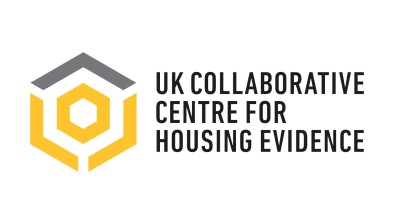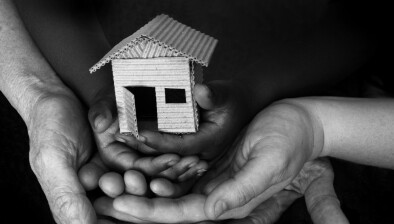Michael Sanders: Building family links shows promise to reduce homelessness

Centre for Homelessness Impact associate Michael Sanders talks about how the charity’s Lifelong Links intervention shows the potential to reduce homelessness among young people in care.
Young adults who spent part of their childhood in care are substantially more likely to experience homelessness than their peers, with some estimates saying as many as a quarter of people sleeping rough might have care experience. This is troubling, not just because anyone experiencing homelessness is something that we believe should be avoided, but because these young people are wards of the state, with the local authority acting as their “corporate parent” - and so we should feel collective dismay at our children becoming homeless. Our report and journal articles on these experiences last year highlights two additional challenges - first that we might expect young people leaving care to have particularly difficult experiences of homelessness, and second that we know little about what works to help reduce this problem.
Over the last several months, we have been working on a project, funded by the Cabinet Office’s Evaluation Accelerator Fund, that aims to fill this gap - looking at the impacts on housing risk for young people leaving care of a series of interventions funded by the Department for Education through their Innovation Fund. This week we published our first paper from this project, which looks at the impacts of an intervention called Lifelong Links on Housing Outcomes for young care leavers.
Lifelong Links is an intervention that was funded under the Children’s Social Care Innovation Programme, which aims to ensure that a child in care has a positive support network around them to help them during their time in care and in adulthood. The intervention was developed by the Family Rights Group, and is led in each partner local authority by an independent Lifelong Links coordinator. The coordinator works with the child to find out who is important to them, who they would like to be back in touch with and who they would like to know. They might be relatives, former foster carers, or teachers. They then work with the family and the local authority to ensure these relationships can continue to grow.
Because Lifelong Links has already been carried out, we’re not able to use a randomised controlled trial to identify impacts, and instead make use of what are known as “Quasi-Experimental” approaches, which use a series of statistical techniques to try to find out if things that have already been carried out are really effective, drawing together data published by the Department for Education and Housing Case Level Collection data held by the Department for Levelling Up, Housing and Communities.
Using these techniques, we found an impact of Lifelong Links on the number of young people who have left care who were owed a homelessness prevention duty, equivalent to a reduction of 22.%. Although this result is not statistically significant at the 5% level, it is very encouraging. So too is the finding that the impact of Lifelong Links on Housing starts small, but appears to get bigger in each subsequent year of implementation, which suggests that sustained use of the approach can pay dividends in the longer term.
These findings suggest first that national and local government’s sustained investment in Lifelong Links is likely to pay off in terms of reduced homelessness for young people leaving care. It also provides useful evidence that quasi-experimental approaches can be used to evaluate interventions like this when trials are not possible.
We’ll be publishing our other findings from this programme of work over the coming months.
- Michael Sanders is a professor of public policy at King’s College London and an associate of the Centre for Homelessness Impact. This research was funded by the UK Cabinet Office as part of the Evaluation Accelerator Fund.








